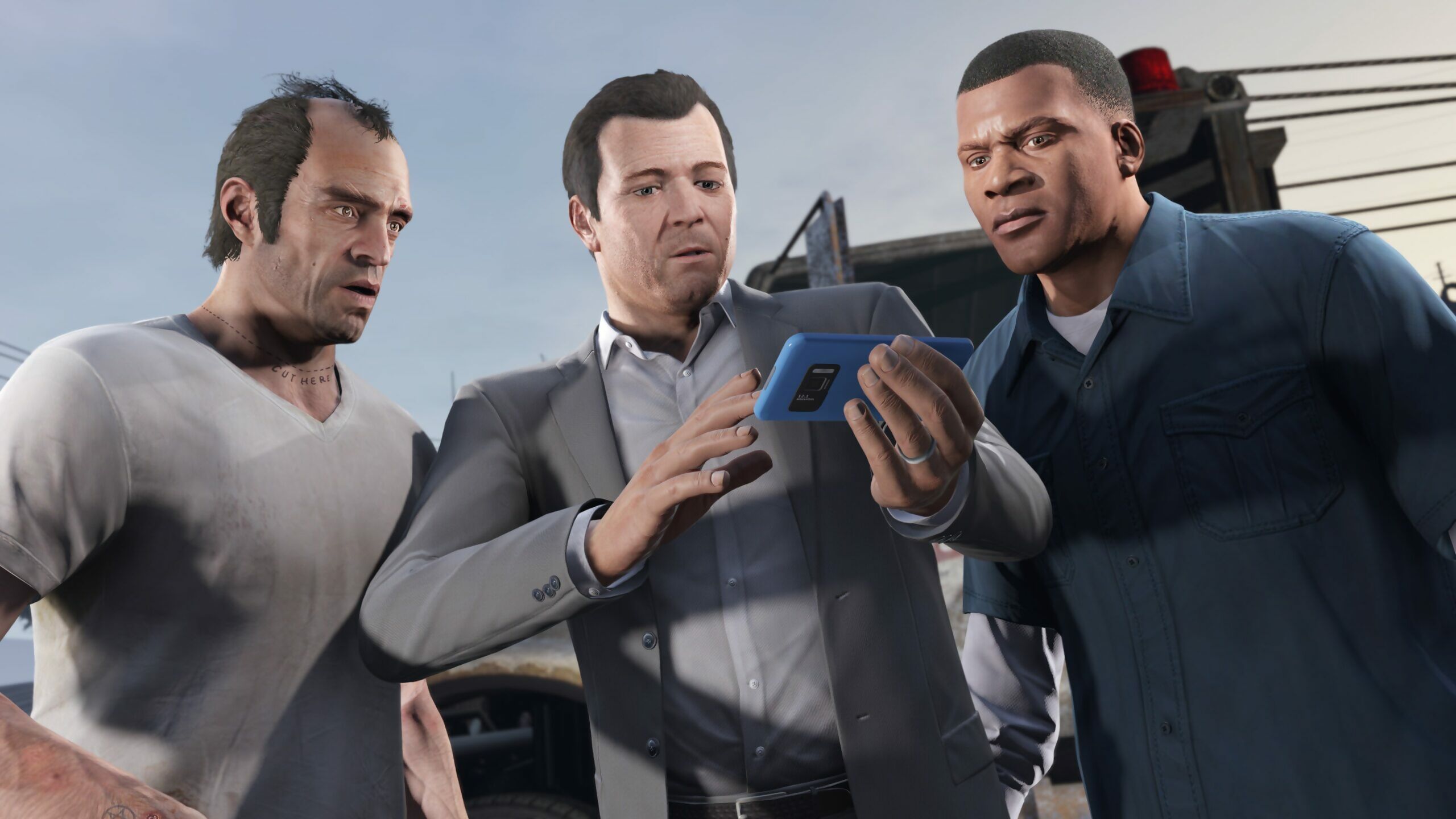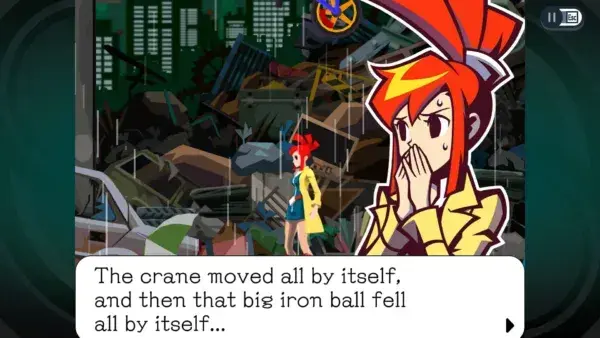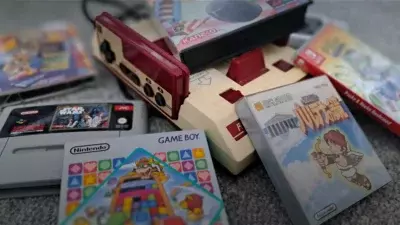
In media res allows players to get right into the thick of a game’s story, but there are times when the device should be avoided. Stuart provides an in-depth guide.
‘In media res’ is one of several terms that often comes up when discussing video game design, with others including ‘ludonarrative dissonance’ (the gap between your gameplay and story), ‘metagaming’ (strictly meaning tactics outside of a game but generally referring to any long-term progression), and ‘the possibility space’ (all actions possible in a game). Let’s dig into ‘in media res’, because although it doesn’t suit every game, it can be a useful technique.
Press X to skip
To begin a game in media res (Latin for ‘in the middle of things’) is to cut out all the boring bits of “Once upon a time” and thrust players straight into the action. This doesn’t mean your game must instantly begin with combat, rather that you deliberately omit the traditional setup.
In media res is a storytelling technique designed to hook readers, viewers, or players right from the beginning, making it less likely that they’ll shift their limited time and attention onto something else. The Indiana Jones and James Bond movies usually begin in media res, with our hero immediately engaged in a difficult or dangerous situation (skipping the initial setup of the hero planning and travelling to wherever the film starts). Skyrim does the same, beginning the game with you about to be executed then suddenly being attacked by a dragon (skipping being captured by Imperial soldiers and chucked on a wagon).

Beginning in media res can be effective at grabbing attention, but it has the downside of potentially overwhelming players. For example, if this article began in media res then we’d have skipped this entire introduction and started
with the paragraph below, plunging straight
into how to use the technique and leaving it to you to work out what I was talking about as we went along.
Questions hook players
In media res is so effective because it immediately forces the audience to ask questions. Where and when is this set? Why is this person distressed? Why is that person trying to kill them? Who’s a hero or a villain? This is important, because in our world of free games, demos, and streaming, if you don’t quickly hook players then you risk them simply turning to another of the many, many games demanding their attention. Naturally, compelling gameplay is one way to grab players, but so is a plot that asks questions.
It’s notable that many huge-budget triple-A games do begin with “Once upon a time”, taking the player through innumerable company logos, calibration setup, and then backstory before anything exciting happens. They can ‘cheat’ like this because they know players have already committed to the game (such as through paying a lot of cash or sitting through a lengthy install), and therefore those players will tolerate a slow opening. It will be interesting to see if services like Microsoft’s Game Pass will affect even triple-A games, as laying an endless
buffet of ‘free’ choices in front of players may demand that every game gets to its hook as quickly as possible.
Using the technique
As mentioned earlier, starting a game in media res doesn’t have to mean it begins with action – any situation where we’ve clearly skipped over the setup and begun at some pivotal moment can grab players. For example, in Remedy’s Control, we enter the Oldest House after the Hiss invasion, not before it begins, so the player immediately has to ask ‘Where and who am I?’ but also ‘What went wrong here?’. Another example is Breath of the Wild, which starts with you waking from the dead a century after a certain sequence of events have concluded.

Once you’ve hooked players with an intriguing plot (and fun gameplay, of course) then you can begin revealing how things got to the game’s start point through dialogue and environmental storytelling during play. The clues that allow you to put together Rapture’s downfall in BioShock are a great example. Gone Home is another, as the game would be completely ruined if we had simply followed the events before the player arrives: asking ‘What happened?’ is the entire point of the game.
Because we’ve skipped the setup, however, we have a lot of information we need to tell the player at some point, so care must be taken in how this information is relayed in order to avoid ‘info dumping’ later. One approach is to reveal backstory through your characters, as the way they look, speak, and act can subtly communicate a lot of information. Be careful to avoid falling into the trap of having characters ostensibly speaking to each other but actually talking to the player (a handy rule is if ever you have one character saying to another “Well, as you know…”, then you’ve crossed into ‘exposition dumping’). If your game doesn’t have characters then you can also use your environment to fill in your backstory, as demonstrated by Unpacking.
Although in media res is predominantly a narrative technique, you could consider whether it might be applied to your gameplay, too. For example, a Tetris mode that begins with half a screen full of blocks might loosely be considered to be using in media res, as does a race that puts you in the driving seat midway through a lap, rather than on the start line.
Another approach is to include flashbacks, revealing events that happened before the game began, with bonus points if these are actually playable. You can even go as far as Everybody’s Gone to the Rapture, with – spoilers! – the entire game being a flashback to earlier events. Games also have the unique ability to allow players to make decisions in flashbacks that cause plot or gameplay changes when you return to the present. An unreleased project I worked on based its heist gameplay around this idea by having playable flashbacks to when another character carried out an action that helped with the current problem. For example, if you opened a door at four minutes in the flashback then that door would open four minutes into the real-time gameplay.
Digging into details
To dig a little deeper into how in media res works, ‘normal’ plots establish a situation, then gradually raise the stakes and obstacles as we go along until we reach the story’s climax and wrap things up. In media res stories differ because they don’t start at one and ramp up to ten, instead beginning with drama and then swapping back and forth between calm and tension. Both structures can feature the same amount of excitement; in media res stories simply work out how much of the early setup they can leave until later.

Try taking a look at your game’s plot and being brutally honest about which elements players really must be told at the beginning for anything to make sense. If something’s simply nice to know, then consider whether you can push that information back or simply omit it and leave players to wonder. Rather than starting with ‘This is X’, your goal is to have players asking ‘What is X?’ and then revealing the answer later.
When and why not to use it
If starting a game in media res is great for grabbing players, why would you ever choose not to do it? One reason is that it can be difficult to balance your game so that it starts with a bang, but also ensures players are learning all the controls and techniques they need to play. If they’re distracted by action or drama then players can easily fail to pick up instructions, or can be snapped out of all the cool events you’ve set up by a sudden tutorial prompt appearing. You can help alleviate this by using the ‘three stage’ approach to teaching players, covered way back in Wireframe issue 44 (which you can download at wfmag.cc/44).
A second reason that beginning in media res might not be appropriate is that you lose
the chance to show players what normality looks like before everything kicks off. By having them wake up for a normal day or sit through a long train ride to work, players see how things are supposed to be before something goes terribly wrong. For example, Die Hard starts with a journey rather than the bad guys turning up, using the first few minutes of the film to teach the audience several important facts in quick succession so they don’t have to slow things down with exposition once the action begins.

Conclusion
In media res is a useful technique to have in your mental toolbox because it allows you to look for situations that could be enlivened by having players asking questions rather than simply being told information.
How many questions your players will be happy to hold in their head as they play depends on your game’s intended audience, but if you can hook them with an intriguing plot as well as fun gameplay, then you’re giving your game the best possible chance of grabbing players from the very beginning. As a final example, check out Uncharted 2: Among Thieves, which begins with the main character having been shot and in a train that’s dangling over a cliff, then jumps to a tropical paradise. The gameplay begins with a simple tutorial on jumping and climbing, but the power of beginning the game in media res means I challenge anyone to not want to know how Drake gets from one to the other, and what happens next





